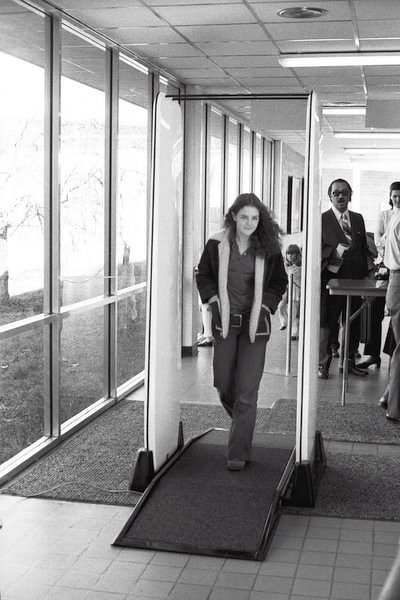Porousness by Ori Lenkinski

*originally published in Hebrew in Haaretz
I recently wrote about lessons I learned in the ballet classes of Christine Wright. Upon finishing that last article, I found that I was not finished reflecting upon how Wright’s wisdom impacted me in the long term. Her gaze on ballet was in fact so broad that it encompassed much more than dance.
She would begin her classes with the dancers lying on the floor. Barres were set up around the room already but instead of standing next to them and stretching, we would splay out, similarly to the end of a yoga class. Newcomers were easy to spot because they would remain standing, waiting for Christine to deliver the first exercise.
In this first session, which lasted about fifteen minutes, she would lead us in a visualization. One of the images included the head as a balloon, which was floating a few inches above the neck. We imagined what this would do to our spinal column, how much longer it would feel, how lifting the weight off our vertebrae would allow us to stretch out. In another, Christine asked us to imagine that we were lying on warm sand under the hot sun. We would try to feel the way the body does as it is loosened by heat and to emulate this sensation. These moments set us up to treat the next hour plus of dancing as an activity in which the mind and body were fully saturated.
Christine often spoke of the body as a conduit. She encouraged us to envision ourselves as porous beings. Instead of our waterproof skin, she would tell us to think of ourselves as a sponge or a piece of cheesecloth.
As dancers, our job is to ingest information and interpret it. We learn steps from a choreographer and then perform them in the way that our body and mind can. No two dancers will perform any sequence exactly in the same way, even in the most precise of unisons. In order to truly succeed in the field, one must constantly absorb the cues, ideas, inspirations, influences and criticisms around. A problematic dancer is one who is opaque, blocked off, closed.
There is something counterintuitive about this, as the dance field is rife with competition and rejection. It hardens you. It toughens you up. In order to make it, you have to put blinders on and focus on your own path, no one else’s.
And yet, Christine insisted that we be sieves.
As a mother, I am just that.
On some molecular level, crossing the threshold into parenthood stripped away a few layers of my outer skin. I spent my twenties gearing myself up to face the world, pummeling through the subway system in New York City, bartending into the wee hours. I was an armadillo. Becoming a mom was like going through security at the airport. Metaphorically, I arrived with a hoodie and boots and came out the other side in socked feet and a tank top. Bare minimum.
The guardian of a tiny being, I found myself crying from the strangest things, happy things, people walking calmly down the street, children playing in the park and obviously, commercials. Even if I wanted to, I couldn’t control the amount of emotional information seeping into me from all angles. I had become porous.
This was true for fear as well. Before I gave birth, I could watch those tension-ridden television shows right before falling asleep. Just a few weeks later, they’d give me chilling nightmares.
My chakras are especially open to other women. I could identify with them in a new way. A friend’s eyes filled with tears as she told me of her marital problems and mine did along with hers. Anything related to new motherhood, breastfeeding, sleep-depravation and so on immediately triggered me.
Without trying to or making any special effort, I could connect to other people’s emotions instantly.
I don’t know if I like this change. Sometimes I wish I could go back to being tough and closed off. Sometimes I revel in the connectivity that becoming a parent has afforded me, in being able to finally embody Christine’s image. Regardless, for now, for good or bad, it seems to be irreversible.
